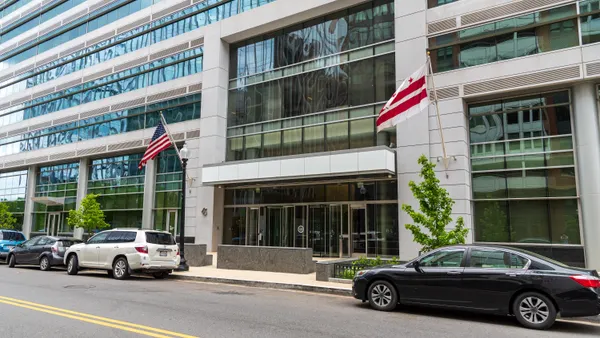Dive Brief:
- Virginia's Southeastern Cooperative Educational Programs has agreed to change its restraint and seclusion procedures, which affected primarily students with disabilities, after a five-year investigation by the U.S. Department of Education's Office for Civil Rights into inappropriate use of the practices, OCR announced Dec. 16.
- The OCR investigation found that during the 2016-2017 school year, 500 SECEP students had 4,190 restraints and 4,413 seclusions. Nearly 90% of those restrained and secluded were students with disabilities, according to a letter sent to the programs' executive director.
- Federal law does not prohibit restraint and seclusion of students, but as this and another recently released investigation show, inappropriate practices can lead to concerns that students with disabilities were denied civil rights protections under Section 504 and Title II of the Americans with Disabilities Act.
Dive Insight:
OCR did not make a determination that SECEP violated Section 504 and Title II because SECEP had indicated interest in resolving concerns as the investigation continued, the letter said.
SECEP, based in Norfolk, Virginia, is a regional special and alternative education program developed in the late 1970s by eight school divisions in the Tidewater area of Virginia. The program specializes in serving students with autism, emotional disabilities, multiple disabilities and children with behavioral challenges.
The program operates some 70 special education classes in about 50 comprehensive schools, as well as five regional centers and two residential medical facilities. Incidences of restraint and seclusion occurred in both the centers and classrooms.
A number of students in both settings experienced multiple incidents of restraint and seclusion, the investigation found. One student had eight restraints and 17 seclusions during the 2016-17 school year, and then 23 restraints and 55 seclusions the next school year, the letter said.
The settlement between OCR and SECEP shows "just how rampant traumatizing practices are in school for students with disabilities," said Denise Marshall, CEO for the Council of Parent Attorneys and Advocates, in a statement. "It’s hard to imagine how students were able to learn or be in the classroom or how many instances occurred in the years following," Marshall said.
The agreement between SECEP and OCR states the program will:
- Revise procedures to ensure a clear process for addressing student behaviors that result in restraint and seclusion, as well as reevaluate students who have experienced restraint or seclusion.
- Develop or revise procedures for recordkeeping and notifications to parents for when restraint and seclusion may occur.
- Train staff on any revised policies or procedures.
- Review the files of current students who have experienced restraint or seclusion at any point in the past six school years to determine if those students need an evaluation, reevaluation or compensatory education to make up for any services missed due to restraint and seclusion.
- Analyze restraint and seclusion data to determine if additional staff training is needed.














